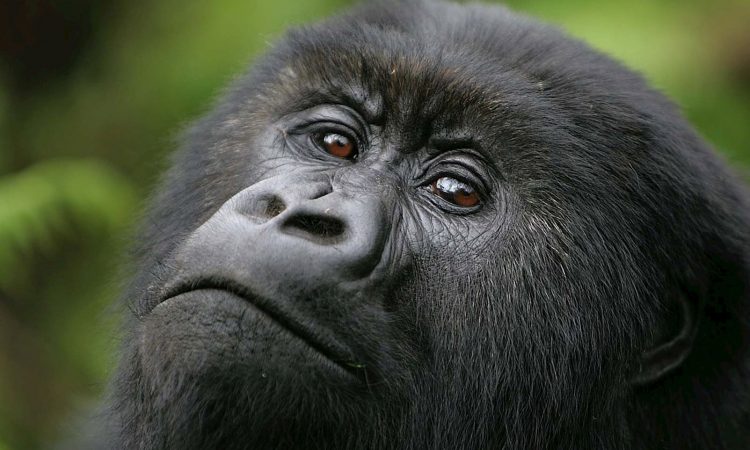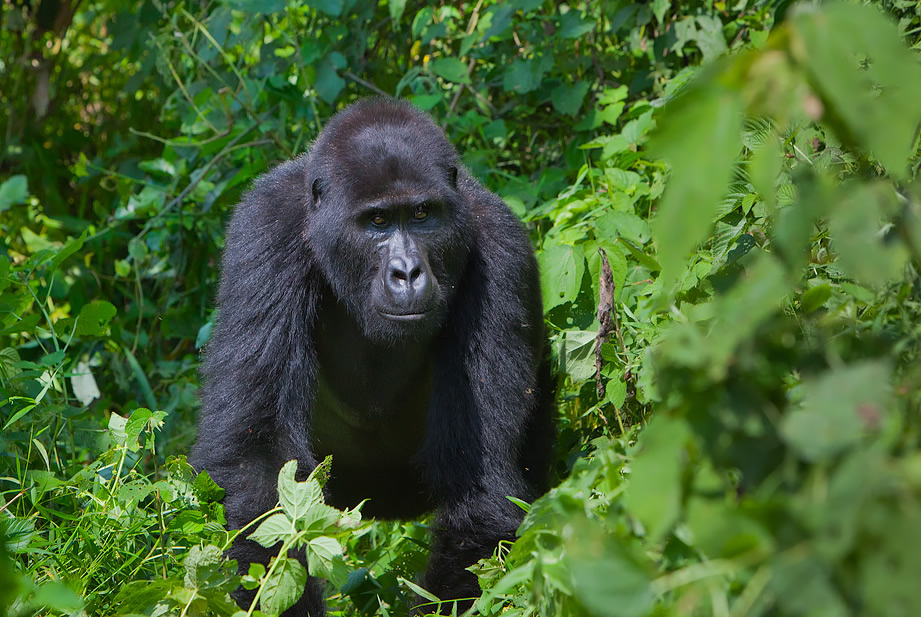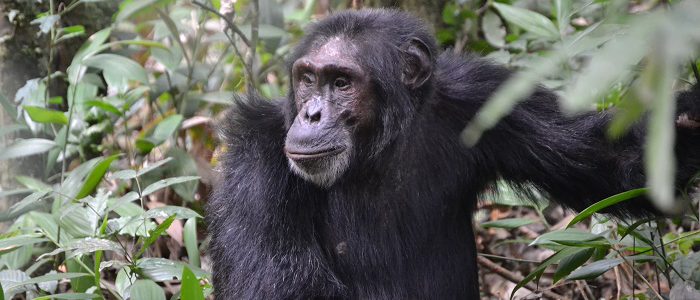Must See Wildlife in Rwanda: The Republic of Rwanda is renowned as the Land of a Thousand Hills. It is a beautiful terrain rich in mountains, lakes, and savannahs, with three national parks and other forest reserves. Rwanda has three major wildlife destinations: Volcanoes National Park, Nyungwe Forest National Park, and Akagera National Park, each with a distinct species. Aside from bird watching, animal viewing possibilities are limited outside of these national parks.

Despite being landlocked, this little country – slightly larger than Wales – boasts a diverse range of ecosystems that sustain over 700 distinct bird species. Giant forest pigs, hippos, and golden monkeys are among the other Rwandan species. But the critically endangered mountain gorilla is Rwanda’s indisputable monarch and most popular visitor attraction: about 500 of them dwell here.
Must See Wildlife in Rwanda.
- Mountain Gorillas in Volcanoes National Park.
Rwanda is one of just three nations in the world where visitors may view mountain gorillas in their natural habitat. Tourists may see seven families, including one group of 41 gorillas that contains unusual twins. These magnificent creatures may weigh up to 200 kilos, yet their size belies their kind demeanour. Mountain gorillas are primates who feed on plants, tree bark, fruit, and leaves, as well as ants on occasion.

- Lions
Lions were nearly extinct in Rwanda at one point due to humans poisoning them to preserve cattle. However, a group of seven has been reintroduced to the nation in the Akagera National Park in the North East. These are the country’s first wild lions in 15 years, and they appear to be doing well.
- Tree Hyrax
The tree hyrax is an unusual animal. This little nocturnal animal, which is related to sea cows and elephants, is recognized for its peculiar sound. This is followed by a succession of cries and shrieks, so if a tree hyrax disturbs your sleep in Rwanda, you may quickly have nightmares!
- Hamlyn’s Monkey
The Hamlyn’s monkey, commonly known as the owl-faced monkey, is one of Rwanda’s top wildlife attractions. This species is exclusively found in Rwanda and its neighboring nations, and it prefers bamboo forests high in the hills and highlands. Their face is distinguished by a stripe that runs from the mouth to the center of the brow, as well as another that runs horizontally across the brow. These stripes come in a variety of colors, adding to the Hamlyn’s Monkey’s allure.
- Shoebill Stork
The unusual shoebill (also known as the shoebill stork and whale head) is a big bird that has a significant population in Rwanda. It was long assumed to be connected to storks, but new genetic data suggests that it is more closely related to pelicans. The shoebill is simple to distinguish at up to 140 cm long, with grey plumage and its unmistakable clog-shaped bill, yet it can be difficult to spot in its swampland habitat.
- Golden Monkeys
The golden monkeys are an endangered species that can only be found in the Virunga mountain range, which spans Rwanda, Congo and Uganda. Uganda and Rwanda are the only two nations where travelers may trek to see these magnificent monkeys up close.
Best Places to see Wildlife in Rwanda.
Many of the best places to see wildlife in Rwanda are included inside the three major national parks, where visitors who wish to observe animals on a safari excursion will find lots of opportunity. At Akagera National Park, you may view up to 400 different bird species, as well as leopards, hyenas, and giraffes. Akagera National Park in Rwanda is a more traditional African savannah reserve where you can view all five of the Big Five.
The most prevalent animals are buffaloes and elephants, although leopards are becoming more common on night drives, and lions and black rhinos, who were reintroduced in 2015 and 2017, are also becoming more visible.
Maasai giraffe, Burchell’s zebra, warthog, olive baboon, vervet monkey, hippo, impala, Defassa waterbuck, bushbuck, common duiker, eland, topi, Bohor reedbuck, oribis, roan antelope, klipspringer, and the secretive semi-aquatic Sitatunga are among the other animals. On night drives, spotted hyenas, civets, white-tailed mongooses, bush babies, elephant-shrews, and numerous kinds of owls and nightjars are frequently sighted. Akagera is home to over 480 bird species, with a focus on raptors, Waterbirds, and savannah and woodland species.
Nyungwe Forest National Park in Rwanda is Africa’s largest protected rainforest and provides chimpanzee trekking opportunities. It safeguards at least 1,050 plant species, as well as 85 mammals, 310 birds, 32 amphibians, and 38 reptiles. Chimpanzee, Ruwenzori colobus, L’Hoest’s monkey, silver monkey, owl-faced monkey, red-tailed monkey, Dent’s monkey, crowned monkey, vervet monkey, olive baboon, potto, and at least two species of bush baby are also present.

The leopard is the sole member of the Big Five that lives in Nyungwe, however they are rarely seen. Bushbuck and three varieties of duiker are examples of antelope. The tree hyrax is a seldom encountered guinea pig-like mammal with a blood-curdling cry that may be heard at night. Nyungwe is one of Africa’s top woodland ornithological destinations and a must-see for serious birdwatchers.
Volcanoes National Park, as the name indicates, has five volcanoes – Bisoke, Gahinga, Mount Karisimbi, Muhabura, and Sabyinyo – and is an excellent spot to observe the famed mountain gorillas and golden monkeys. The national park is most renowned for its mountain gorilla population, which numbers in the hundreds. This comprises a dozen habituated groups, for whom 96 tracking licenses are provided per day. The golden monkey (also native to the Albertine Rift), elephant, buffalo, giant forest hog, bush pig, bushbuck, and black-fronted duiker are among the other animal species. Around 200 bird species have been documented, including at least 16 Albertine Rift Endemics, however the location is not ideal for birding.
When is the Best Time to see Wildlife in Rwanda?
The dry season in Rwanda lasts from June to mid-September and is ideal for wildlife enthusiasts. Another, shorter, dry season lasts from December through February. Rwanda has a colder climate than several other tropical countries due to its greater elevation.


